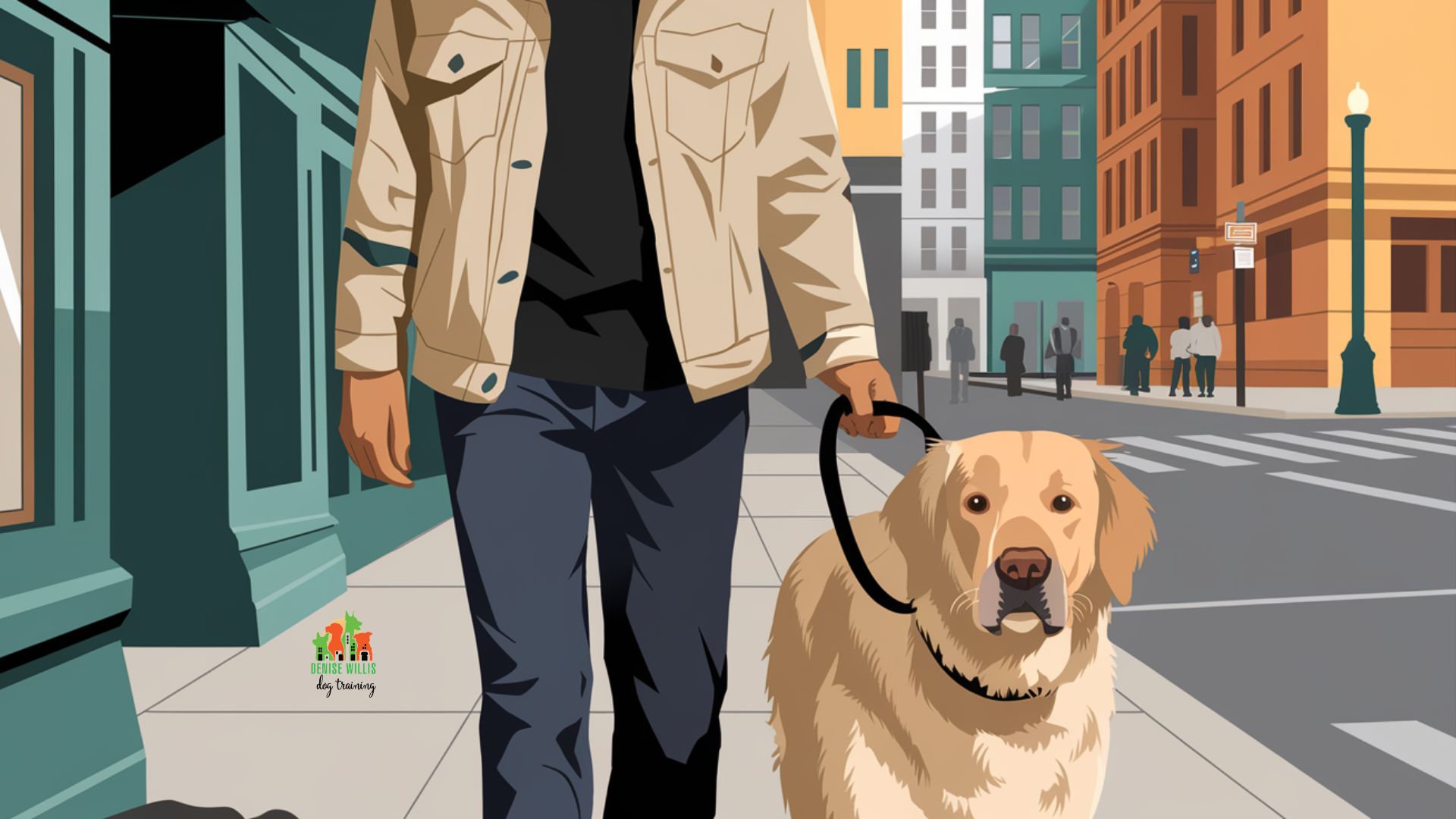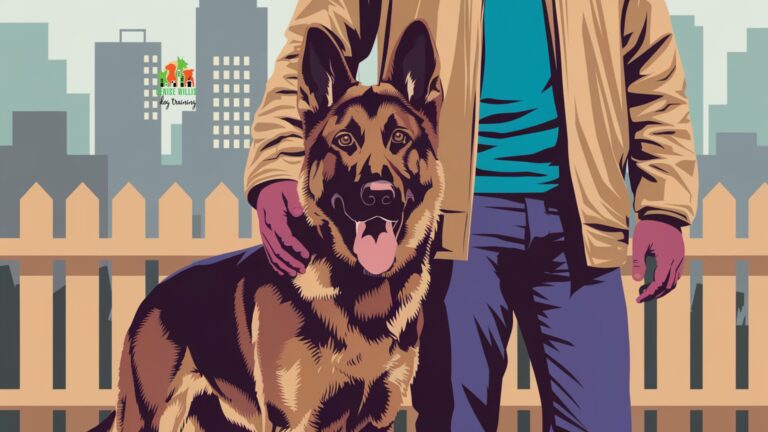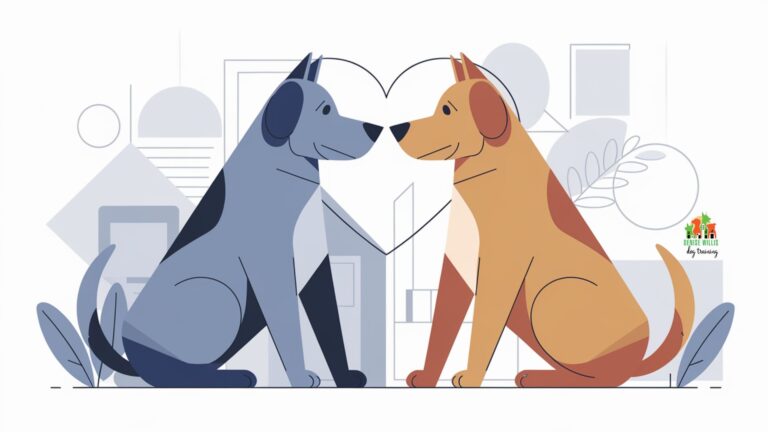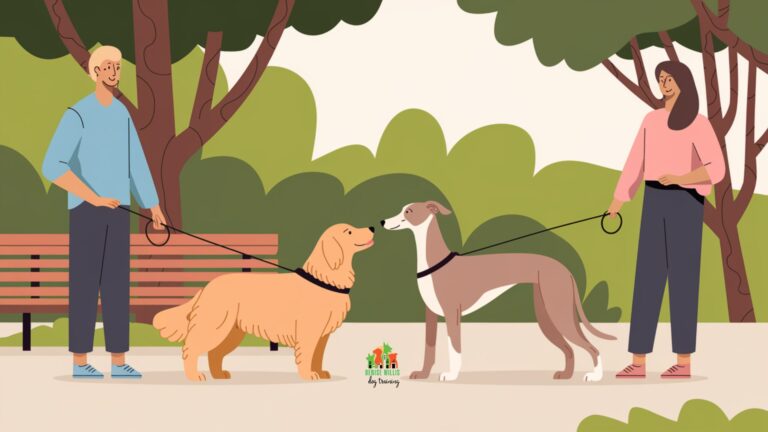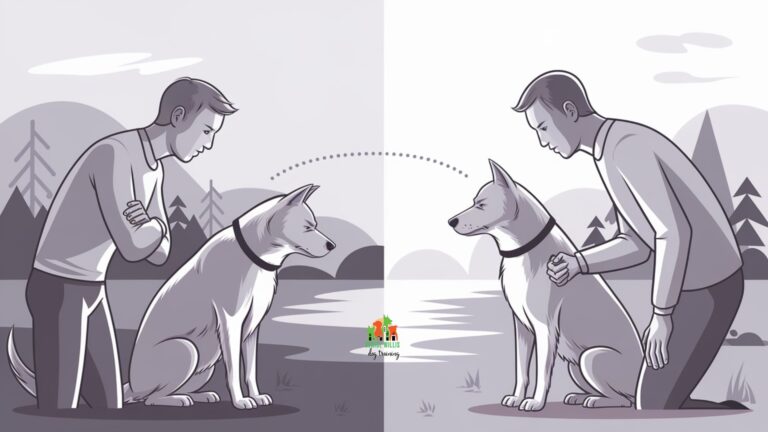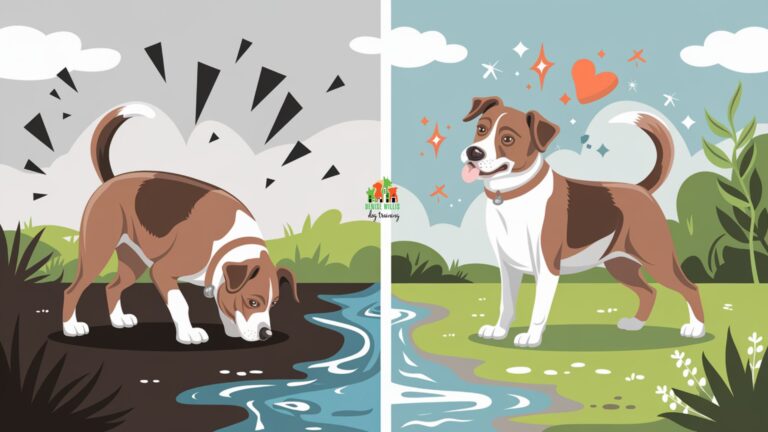Embarrassed by Your Dog’s Aggression in Public? Here’s What to Do
📍 Service Area Notice: DW Dog Training provides in-person training services exclusively in the Greater Baltimore area. While our blog content is designed to help dog owners internationally, our hands-on training services are locally focused. For readers outside our service area, we hope you find value in our articles and welcome you to reach out with questions!
Have you ever felt your cheeks burn with embarrassment as your usually well-behaved dog suddenly starts growling and lunging at strangers in the park?
Dog aggression in public places can turn a relaxing walk into a stressful ordeal. It’s a common issue that leaves many pet owners feeling helpless and isolated.
But don’t lose hope. There are ways to manage and improve this challenging behavior.
Picture yourself confidently walking down a busy street, your furry companion calm and collected by your side.
This isn’t a fantasy. It’s an achievable goal with the right approach and understanding. Your dog’s aggression isn’t a sign of your failure as an owner. Instead, it’s often a signal from a confused or anxious animal asking for help.
Understanding why your dog acts aggressively and learning effective strategies to address it can change those nerve-wracking outings into enjoyable experiences.
You and your four-legged friend can rediscover the joy of worry-free walks and public adventures.
Let’s tackle this challenge together and help your beloved pet become the social butterfly you know they can be.
Key Takeaways
- Root Causes: Understanding the underlying reasons for aggression
- Professional Help: The importance of expert guidance in behavior modification
- Controlled Exposure: Gradually introducing your dog to triggers
- Obedience Training: Building focus and control in public settings
- Environmental Management: Avoiding and managing trigger situations
- Medical Considerations: Ruling out physical causes of aggression
- Consistency is Key: The role of patience and persistent training
Managing Dog Aggression in Public
Identify Triggers
Recognize situations that cause your dog stress in public settings.
Positive Reinforcement
Reward calm behavior to encourage positive associations with public spaces.
Gradual Exposure
Slowly introduce your dog to triggering situations in controlled environments.
Seek Professional Help
Consult a dog behaviorist for personalized strategies and support.
Understanding Dog Aggression in Public Places
When your usually sweet pup turns into a public menace, it’s easy to feel overwhelmed and embarrassed. But before we dive into solutions, let’s take a moment to understand what’s really going on in your dog’s mind.
Dog aggression in public isn’t about your furry friend being “bad” or “dominant.” More often than not, it’s a cry for help. Your dog might be feeling scared, anxious, or unsure about how to handle certain situations. This fear or anxiety can manifest as aggression, which is your dog’s way of saying, “Hey, I’m not comfortable with this!”
Common triggers for public aggression include:
- Unfamiliar Dogs: Your pup might see other dogs as potential threats
- Strangers: People approaching might make your dog feel cornered
- Loud Noises: Unexpected sounds can startle and frighten your dog
- Crowded Spaces: Too many stimuli can overwhelm your furry friend
Understanding these triggers is the first step towards helping your dog navigate the world more comfortably. Remember, your dog isn’t trying to embarrass you – they’re just struggling to cope with their environment.
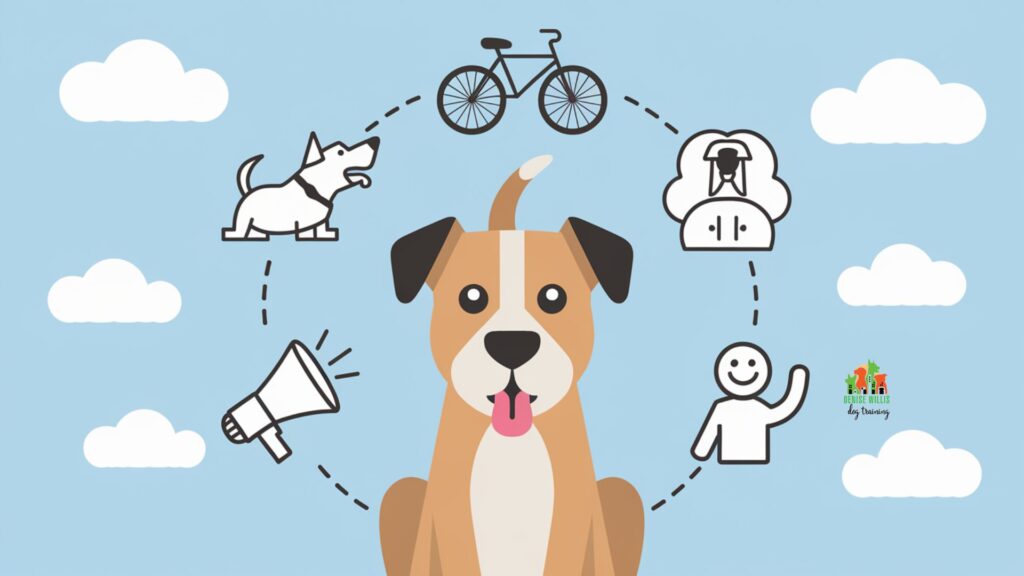
5 Strategies to Manage Dog Aggression in Public
Now that we’ve got the basics down, let’s roll up our sleeves and dive into some practical strategies to help your pup become a model citizen in public.
1. Professional Behavior Modification
When it comes to dog aggression, sometimes we all need a little help from the experts. A professional dog trainer or behaviorist can be your secret weapon in tackling aggression issues.
These canine gurus can:
- Assess Your Dog: They’ll observe your pup’s behavior and identify specific triggers
- Create a Plan: Develop a tailored strategy to address your dog’s unique needs
- Teach Techniques: Show you effective methods to manage and modify behavior
- Provide Support: Offer ongoing guidance as you work through the process
Remember, seeking professional help isn’t admitting defeat – it’s taking a proactive step towards a happier, more relaxed pup (and a less stressed-out you!).
2. Controlled Exposure and Socialization
Think of this as exposure therapy for your four-legged friend. The goal is to gradually introduce your dog to their triggers in a controlled, positive environment.
Here’s how to get started:
- Start Small: Begin with low-intensity versions of the trigger at a distance
- Positive Associations: Pair the trigger with something your dog loves (treats, toys, praise)
- Gradual Progress: Slowly decrease the distance or increase the intensity of the trigger
- Patience is Key: This process takes time, so don’t rush it
For example, if your dog reacts to other dogs, start by watching them from afar while giving treats. Over time, you can decrease the distance as your dog remains calm.

3. Obedience Training and Focus Work
A well-trained dog is easier to manage in any situation. Teaching your pup to focus on you, even with distractions around, can be a game-changer for public outings.
Key commands to master:
- “Watch Me”: Teaches your dog to make eye contact and focus on you
- “Leave It”: Helps your dog ignore potential triggers
- “Heel”: Keeps your dog close and attentive during walks
- “Stay”: Gives you control in static situations
Practice these commands at home first, then gradually introduce distractions. The goal is for your dog to respond reliably, even when other dogs or people are around.
4. Environmental Management
Sometimes, the best offense is a good defense. Managing your dog’s environment can prevent aggressive outbursts before they happen.
Try these tactics:
- Choose Your Routes: Opt for quieter walking paths to avoid triggers
- Time Your Outings: Walk during off-peak hours when fewer people and dogs are out
- Use Proper Equipment: A front-clip harness or head halter can provide better control
- Consider a Muzzle: While not a cure-all, a properly fitted muzzle can provide peace of mind
Remember, environmental management is a temporary solution while you work on long-term behavior modification. It’s about setting your dog up for success, not avoiding the problem forever.
5. Medical Evaluation
Sometimes, aggression can be a sign of an underlying health issue. A trip to the vet can rule out any physical causes for your dog’s behavior.
Potential medical causes of aggression include:
- Pain: A dog in pain may lash out when approached
- Thyroid Issues: Hormonal imbalances can affect behavior
- Neurological Problems: Brain tumors or cognitive dysfunction can alter personality
- Vision or Hearing Loss: Impaired senses can make a dog feel vulnerable and reactive
Always consult with your vet if you notice sudden changes in your dog’s behavior. They might recommend blood tests, physical exams, or even medication to address underlying issues.
Journey to Addressing Dog Aggression in Public
Weeks 1-2: Initial Assessment
Schedule and complete an assessment with a professional behaviorist or trainer.
Weeks 3-6: Foundation Building
Implement management strategies and basic obedience training to establish control and communication.
Months 2-4: Intensive Behavior Modification
Focus on controlled exposure to triggers and desensitization exercises.
Months 5-8: Gradual Improvement
Practice in more challenging environments while reinforcing positive behaviors.
Months 9-12: Significant Progress
Many dogs show significant improvement, though some may require ongoing training and management.
Throughout: Regular Check-ins
Meet with the behaviorist or trainer every 4-6 weeks to adjust the training plan as needed.
Practical Tips for Immediate Use
While you’re working on long-term solutions, here are some quick tips to help manage public outings:
- Be Aware: Stay alert to your surroundings and potential triggers
- Body Language: Learn to read your dog’s stress signals (lip licking, yawning, whale eye)
- Create Space: Don’t be afraid to ask people to give your dog space
- Bring High-Value Treats: Use extra special goodies to reward calm behavior
- Have an Exit Strategy: Know how to quickly and calmly remove your dog from stressful situations
Remember, every outing is a training opportunity. Stay positive and celebrate small victories!
The Role of Consistency and Patience
Changing your dog’s behavior is a marathon, not a sprint. Consistency in your approach and patience with the process are crucial for success.
- Set Realistic Goals: Celebrate small improvements along the way
- Stay Committed: Stick to your training plan, even when progress seems slow
- Be Consistent: Ensure all family members are on the same page with training
- Keep a Journal: Track your dog’s progress to stay motivated
Remember, your dog is trying their best to understand and adapt. Your patience and understanding will go a long way in helping them succeed.
Product Recommendations
Managing dog aggression in public places often requires more than just training. The right tools can make a world of difference. Here are some products that can help you and your furry friend navigate public spaces more comfortably and safely.
- PetSafe Easy Walk Harness: This front-clip harness reduces pulling and gives you better control without putting pressure on your dog’s throat.
- ThunderShirt Classic Dog Anxiety Jacket: For dogs whose aggression stems from anxiety, this pressure wrap can have a calming effect.
- Treat Pouch: A hands-free treat pouch allows for quick rewards during training sessions in public.
- Long Training Leash: A 15-20 foot leash gives your dog more freedom while still maintaining control during desensitization exercises.
- Baskerville Ultra Muzzle: If needed, this comfortable and secure muzzle allows your dog to pant, drink, and take treats while preventing bites.
These products can be valuable aids in your journey to manage your dog’s aggression in public. They provide additional control, safety, and peace of mind as you work on behavior modification. Remember, while these tools are helpful, they should be used in conjunction with proper training and professional guidance for the best results.
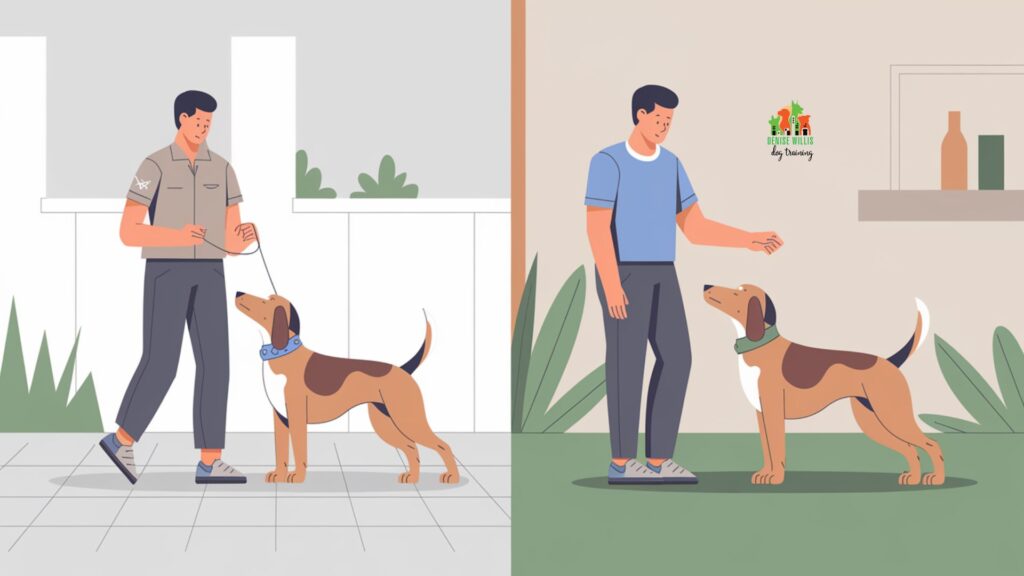
Frequently Asked Questions About Dog Aggression in Public Places
Q: Can aggression in dogs be completely cured?
A: While “cured” might be a strong word, most dogs can show significant improvement with proper training and management. The goal is to make your dog comfortable and manageable around their triggers, even if they never become the life of the doggy party.
Q: How long does it take to see improvements in my dog’s aggressive behavior?
A: The timeline varies depending on the dog, the severity of the aggression, and how consistent you are with training. Some dogs show improvement in a few weeks, while others might take months. Remember, we’re not running a sprint here – it’s a marathon.
Q: Is it safe to use a muzzle on my aggressive dog?
A: When used properly, muzzles can be a safe and effective tool. Think of it like a seatbelt for your dog – it’s not about punishment, it’s about safety. But it’s important to introduce the muzzle properly and use it as part of a broader training program, not as a quick fix.
Q: Can neutering or spaying help reduce aggression in dogs?
A: It can, especially for male dogs with hormone-driven aggression. But it’s not a guaranteed solution. It’s like taking away the matches from a pyromaniac – it might help, but you still need to address the underlying desire to start fires.
Q: Are certain breeds more prone to dog-on-dog aggression?
A: While some breeds might have a higher tendency towards aggression, individual personality, upbringing, and experiences play a much larger role. It’s like how not every teenager with a skateboard is a delinquent – stereotypes only get you so far.
Further Reading
If you’re looking to dive deeper into understanding and managing dog aggression in public places, these articles offer valuable insights and strategies:
- Aggressive Dog Introductions: Learn safe techniques for introducing aggressive dogs to new canine companions.
- Socializing Your Fearful Dog: Discover strategies to help your anxious pup feel more comfortable in social situations.
- 10 Warning Signs Your Dog Might Bite and How to Prevent It: Recognize early signs of aggression and learn prevention techniques.
- 5 Proven Strategies to Stop Your Dog’s Aggression Towards Other Dogs: Explore effective methods to curb dog-on-dog aggression.
- Decoding Your Dog: 15 Body Language Signals You Need to Know: Understanding your dog’s body language can help you prevent aggressive outbursts.
These resources offer a wealth of information to support your journey in managing your dog’s aggression in public spaces. They provide deeper insights into specific aspects of dog behavior and training techniques that can complement the strategies discussed in this article.
Test Your Knowledge: Managing Dog Aggression in Public
Final Thoughts
Dealing with dog aggression in public places can feel like an uphill battle, but remember – you're not alone in this journey. With the right strategies, professional help, and a hefty dose of patience, you can help your furry friend become more comfortable and well-behaved in public settings.
Remember, progress might be slow, but every small step forward is a victory. Celebrate those moments when your dog remains calm in situations that would have previously triggered them. These are the building blocks of long-term change.
At DW Dog Training, we understand the challenges you're facing. Our team of experienced trainers is here to support you every step of the way. Whether you need personalized training plans, group classes, or one-on-one consultations, we're committed to helping you and your dog navigate the world with confidence.
We Want to Hear from You!
Your experiences and insights are valuable, not just to us, but to other dog owners facing similar challenges.
Have you tried any of these strategies?
What worked for you?
What didn't?
Do you have any additional tips or tricks that have helped your dog in public spaces?
We'd love to hear your thoughts and questions. Drop a comment below, share your story, or reach out to us directly.
Remember, every dog's journey is unique, and by sharing our experiences, we create a supportive community that benefits dogs and owners alike.
Together, we can turn those stressful walks into enjoyable adventures. Here's to wagging tails, happy barks, and peaceful strolls in your future!

